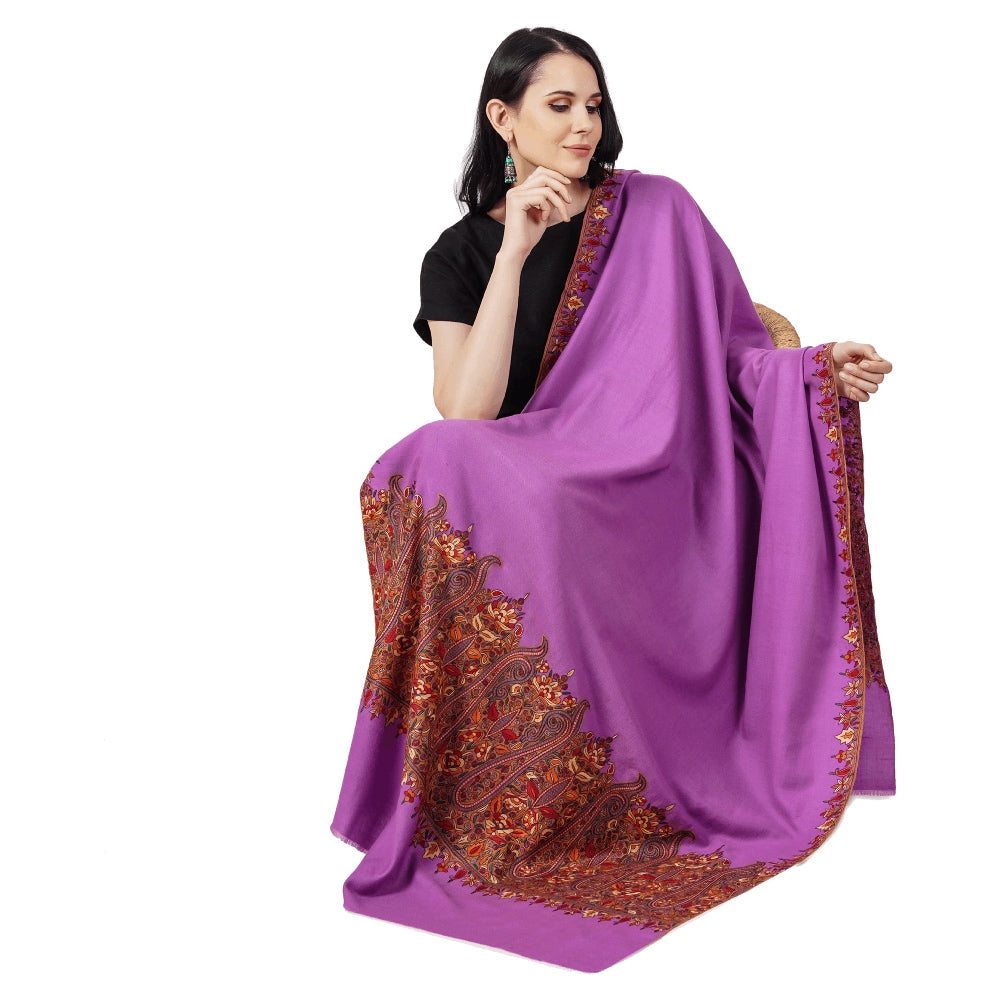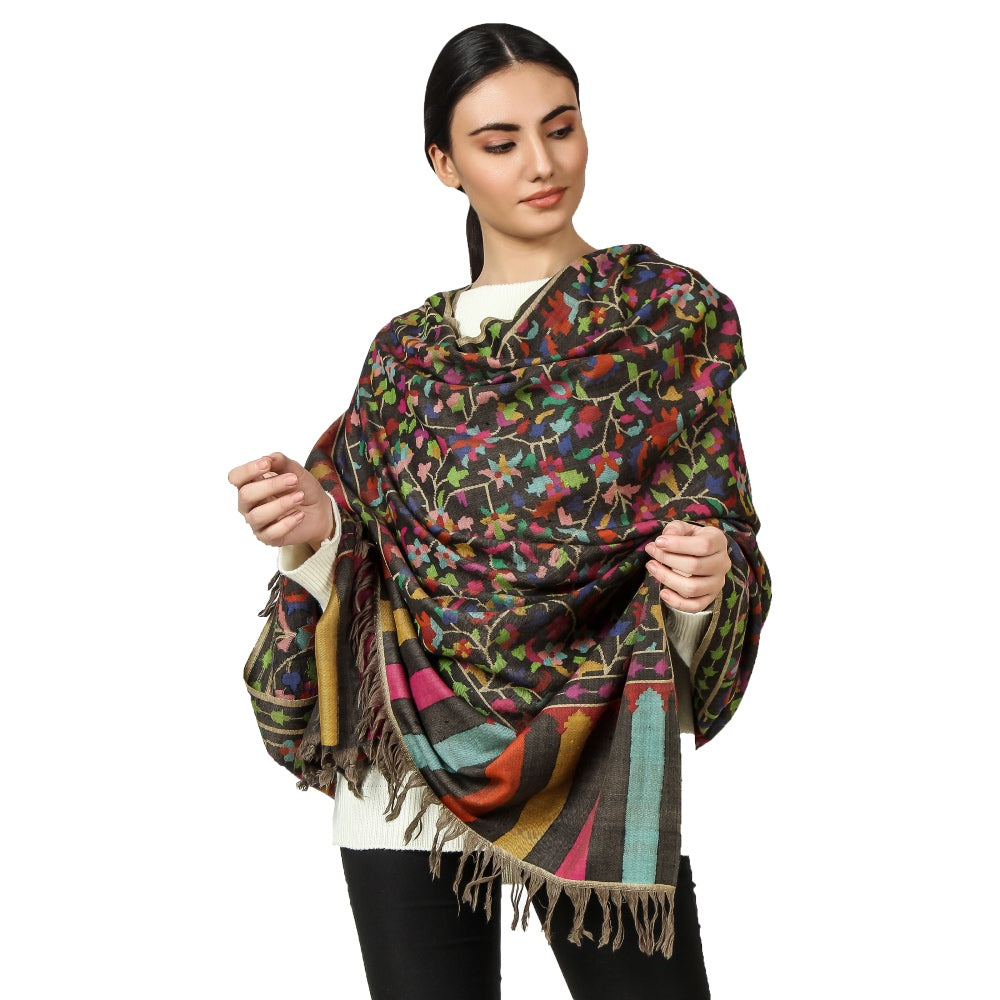
How to clean Cashmere?
Share
Cashmere is a luxurious and soft fabric that is obtained from the cashmere goat. It is known for its lightweight and insulating properties, making it perfect for colder climates. Cashmere is highly valued for its quality, rarity, and softness, which is why it is often used to create high-end clothing items such as sweaters, scarves, and blankets.

Importance of Proper Cleaning: Proper cleaning of cashmere is crucial for maintaining its softness, shape, and quality. Cashmere fibers are delicate and can be easily damaged if not cleaned correctly. Improper cleaning can result in shrinkage, stretching, fading, or damage to the fabric's fibers, which can significantly reduce the longevity of the cashmere item.
Purpose of the Blog: The purpose of this blog is to provide readers with a comprehensive guide on how to clean and maintain cashmere items. The blog will cover different methods of cleaning, including hand washing, and dry cleaning. It will also discuss the frequency of cleaning, removing stains, and maintaining cashmere items to prolong their lifespan. By following the tips and guidelines provided in this blog, readers can ensure that their cashmere items remain soft, comfortable, and in good condition for years to come.
Understanding Cashmere
What is Cashmere?

Cashmere is a luxury fabric that is obtained from the soft undercoat of cashmere goats. The fibers are incredibly soft, fine, and lightweight, which makes it an ideal material for high-quality clothing items such as sweaters, scarves, and shawls. Cashmere is known for its warmth, breathability, and durability, making it a favorite among those who appreciate luxury and comfort.
Where does it come from?

Cashmere goats are primarily raised in Ladakh, Mongolia, China, and parts of Iran, Afghanistan, and Pakistan. The production of cashmere involves the collection of the soft undercoat fibers, which are carefully combed from the goat's coat during the spring molting season. Each goat produces only a small amount of cashmere each year, making it a scarce and valuable resource.
Types of Cashmere:
There are two main types of cashmere: pure cashmere and blended cashmere. Pure cashmere is made entirely from cashmere fibers, while blended cashmere is a combination of cashmere fibers and other materials such as wool or silk. Pure cashmere is considered to be the highest quality and most luxurious of the two types.
Why is Cashmere Expensive?

Cashmere is expensive due to its rarity and the labor-intensive process involved in its production. Each cashmere goat produces only a small amount of undercoat fibers, which must be carefully collected and sorted by hand. It can take up to four goats' worth of fiber to create one cashmere sweater. Additionally, the production process involves multiple steps, including washing, carding, spinning, and weaving, which further increases the cost. Finally, the demand for cashmere is high due to its luxurious feel and quality, making it a status symbol and driving up the price.
When to Clean Cashmere
Frequency of Cleaning:
The frequency of cleaning cashmere depends on several factors, including how often the item is worn, the level of perspiration, and exposure to dirt and stains. As a general rule, cashmere items should be cleaned after every 3-5 wears to maintain their freshness and cleanliness.
Signs of Dirt and Stains:
Some signs that indicate that cashmere items need cleaning include visible stains, unpleasant odor, and loss of softness. Dirt and stains can easily damage cashmere fibers and cause pilling, so it's essential to clean the item as soon as possible after noticing any signs of dirt or stains.
How Often to Wash or Dry Clean:
The frequency of washing or dry cleaning cashmere items depends on the type of item and how often it is worn. For items such as sweaters and shawls, it is recommended to hand wash them every 2-3 wears or dry clean them every 5-6 wears. For items that are worn less frequently, such as blankets or scarves, they can be cleaned less often.
Tips for Avoiding Frequent Cleaning:
To avoid frequent cleaning of cashmere items, it is essential to take proper care of them. This includes storing them in a cool and dry place, away from direct sunlight, and avoiding contact with perfumes or other chemicals. Additionally, it is recommended to wear an undershirt or camisole to prevent sweat and body oils from coming into contact with the cashmere. Finally, consider rotating your cashmere items, so they have time to air out and recover their shape between wears. By following these tips, you can reduce the frequency of washing or dry cleaning your cashmere items, which will help them last longer and maintain their quality over time.
Hand Washing Cashmere
Preparing for Washing:
Before hand washing your cashmere item, it is essential to read the care label for any specific instructions or warnings. Then, prepare a basin or sink with lukewarm water and a gentle wool or cashmere detergent. Be sure to avoid using hot water, as it can shrink and damage the fibers.
Steps for Hand Washing:
To hand wash your cashmere item, begin by submerging it in the water and gently agitating it for a few minutes. Do not scrub or wring the item, as this can cause damage. Instead, press gently to release any dirt or stains. After a few minutes, drain the soapy water and rinse the item thoroughly with clean, lukewarm water.
Tips for Hand Washing:
When hand washing cashmere, there are a few tips to keep in mind. Firstly, avoid soaking the item for too long, as this can cause stretching and damage. Secondly, use a gentle detergent specifically designed for wool or cashmere to avoid any damage or shrinkage. Finally, handle the item with care and avoid wringing, twisting or rubbing it during washing.
Drying Cashmere:
After washing, remove any excess water by pressing the item gently against the side of the sink or basin. Do not wring or twist the item, as this can cause stretching and damage. Then, lay the item flat on a clean, dry towel and roll it up to remove any remaining water. Finally, reshape the item to its original shape and lay it flat on a clean towel to air dry. Avoid hanging or wringing the item, as this can cause stretching and damage to the fibers.
Dry Cleaning Cashmere
When to Dry Clean:
Dry cleaning is a good option for cleaning cashmere items that are heavily soiled or stained, or if the care label specifically recommends dry cleaning. It is important to note that frequent dry cleaning can damage the fibers and reduce the lifespan of the item. Therefore, it is important to follow the care label instructions and only dry clean when necessary.
Selecting a Dry Cleaner:
When selecting a dry cleaner for your cashmere items, it is important to choose a reputable and experienced cleaner who specializes in cleaning delicate fabrics. Check reviews and ratings online, and ask for recommendations from friends or family members who have used a dry cleaner before. Also, be sure to communicate any special instructions or concerns with the cleaner.
Tips for Dry Cleaning:
To ensure the best results from dry cleaning, there are a few tips to keep in mind. Firstly, be sure to point out any stains or areas of concern to the cleaner, so they can address them appropriately. Secondly, avoid using fabric softeners or other chemicals that can damage the fibers. Finally, when picking up your cashmere item from the dry cleaner, inspect it carefully to ensure there are no new stains or damage. If you do notice any issues, be sure to bring them to the attention of the dry cleaner before leaving.
Removing Stains
Common Stains and How to Remove Them:
Cashmere items are susceptible to stains, and it is important to address them as soon as possible to prevent permanent damage. Common stains include oil-based stains, wine or coffee stains, and makeup stains. To remove oil-based stains, gently blot the affected area with a clean, dry cloth to remove as much of the oil as possible, then apply a small amount of talcum powder or cornstarch to the area and let it sit for a few hours before brushing it off. For wine or coffee stains, dab the area with a clean cloth soaked in lukewarm water and a gentle wool detergent, then rinse thoroughly. For makeup stains, use a mild soap or detergent and a clean, damp cloth to gently remove the stain.
Tips for Removing Stains:
When removing stains from cashmere items, it is important to act quickly and gently. Avoid rubbing or scrubbing the affected area, as this can cause damage to the fibers. Instead, use a gentle blotting or dabbing motion to remove as much of the stain as possible. Also, be sure to test any cleaning solution on an inconspicuous area of the item before using it on the stain.
Preventing Stains:
To prevent stains from setting into your cashmere items, there are a few tips to keep in mind. Firstly, avoid wearing your cashmere item while eating or drinking, or apply a stain-resistant spray to the item before wearing it. Secondly, store your cashmere items in a clean, dry place to prevent any exposure to moisture or dirt. Finally, avoid using perfumes or other chemicals on your skin that can transfer onto the cashmere item and cause staining.
Maintaining Cashmere
Storing Cashmere:
Proper storage of cashmere items is key to maintaining their quality and prolonging their lifespan. When storing cashmere, be sure to fold the item neatly and store it in a clean, dry place away from direct sunlight. Avoid hanging cashmere items, as this can cause stretching and damage to the fibers. Also, be sure to store cashmere items separately from other clothing to prevent snagging or pilling.
Tips for Maintaining Cashmere:
To keep your cashmere items looking their best, there are a few tips to keep in mind. Firstly, avoid wearing the same cashmere item multiple times in a row, as this can cause stretching and loss of shape. Instead, allow the item to rest for a day or two between wears. Secondly, avoid using harsh detergents or fabric softeners when washing cashmere, as these can damage the fibers. Finally, consider investing in a cashmere comb to remove any pills or fuzz from the item.
Preventing Damage:
To prevent damage to your cashmere items, there are a few tips to keep in mind. Firstly, avoid wearing cashmere items in areas where they are likely to come into contact with rough surfaces or sharp objects, as this can cause snagging or tearing. Secondly, avoid exposing cashmere items to excessive heat or sunlight, as this can cause fading or damage to the fibers. Finally, avoid using bleach or other harsh chemicals on cashmere items, as this can cause irreparable damage.
Conclusion
Recap of Main Points:
Cashmere is a luxurious and delicate fabric that requires proper cleaning and maintenance to retain its quality and prolong its lifespan. Hand washing and dry cleaning are both viable options for cleaning cashmere, and it is important to address stains as soon as possible to prevent permanent damage. To maintain cashmere items, proper storage and care are key, including avoiding harsh detergents or fabric softeners, using a cashmere comb to remove pills or fuzz, and storing the item in a clean, dry place away from direct sunlight.
Importance of Proper Cleaning and Maintenance:
Proper cleaning and maintenance of cashmere items is crucial to keep them looking their best and retaining their quality. Neglecting to care for cashmere properly can lead to fading, stretching, pilling, or even irreparable damage to the fibers. Taking the time to properly clean and maintain cashmere items not only prolongs their lifespan but also ensures that you get the most out of your investment.
Encouragement to Care for Cashmere Properly:
In conclusion, caring for cashmere properly is essential for maintaining the quality and longevity of these luxurious items. By following the tips outlined in this blog, you can keep your cashmere items looking their best and ensure that they remain a staple in your wardrobe for years to come. So go ahead and treat yourself to a beautiful cashmere sweater or scarf, and take the time to care for it properly – you won't regret it!







